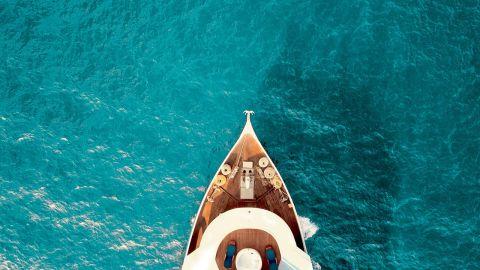550 GBP (£)
EnquireSchool South West Maritime Academy
Location South Gloucestershire
Duration 4 day(s)
Dates Contact for more info
Accommodation None Included
What is the Efficient Deck Hand (EDH) course?
The Efficient Deck Hand course includes seamanship skills, rope work and rigging and the Code of Safe Working practices.
This course is a requirement for the issue of an Officer of the Watch (Yacht less than 3000 Gt) CoC and also for the Able Seafarer Deck Certificate Regulation II/5.
Course Structure
1. Nautical knowledge
a) Know the meaning of the common nautical terms.
b) The various parts of the ship, for example, decks, compartments, ballast tanks, air pipes, pipeline systems.
c) Knowledge of the correct use of ensigns, courtesy flags and international single letter flags.
d) Report bearings of objects or lights in degrees or points on the bow, using compass cards in 360 degree notation.
e) Understanding helm orders and the ability to communicate with the officer of the watch on matters relevant to watch-keeping duties.
f) Procedures for the relief, maintenance and hand over of a watch and the information needed to maintain a safe watch.
g) Knowledge of the use of lifesaving and fire-fighting appliances as follows;
Importance of musters and drills and know what action to take on hearing alarm signals;
General arrangements and dangers of fixed smothering systems;
Correct operation, precautions and dangers of lifeboat release gear;
Procedures for boat preparation and launching;
Precautions to be observed when maintaining lifeboats and davits;
Fire and watertight doors.
2. Code of Safe Practice for Merchant Seamen (COSWP) 1998
3. Shipboard maintenance
a) Practical knowledge of general shipboard maintenance including;
The use of painting, lubrication and cleaning materials and equipment and understand routine maintenance and repair procedures.
Surface preparation techniques.
Manufacturer’s safety guidelines, shipboard instructions, and the requirements safe disposal of waste materials.
Application, maintenance and use of hand and power tools.
4. Apply precautions and contribute to the prevention of pollution of the marine environment.
a) Basic knowledge of marine environmental issues including;
Precautions to be taken to prevent pollution of the marine environment.
Use and operation of anti-pollution equipment.
Approved methods for disposal of marine pollutants.
PART II – Practical work Testing as far as possible by practical demonstration.
1. Bends and Hitches
a) Common knots bends and hitches including:-
Reef knot
Timber hitch
Cove hitch
Rolling hitch
Figure of 8 knot ? Wall and crown knot
Bowline and bowline on the bight
Sheet bend and double sheet bend
Sheepshank
Fishermen’s bend
Monkey’s fist
Round turn and two half hitches
Marlinspike hitch
2. Splicing and whipping
a) Common splicing and whipping including;
Splice in eight stranded plaited rope
Back and short splice in three-stranded rope
Eye splice with locking tuck in wire rope.
Parcel and serve a splice.
Whip a rope’s end using plain or palm and needle whipping.
Put a seizing on a rope and wire.
[/vc_column_text][/vc_column]
3. Rope work and rigging
a) General deck work including;
Care and storage of fibre and wire ropes, cables and chains, including their construction, use, marking, maintenance and proper stowage.
Slinging and rigging a stage and bosun’s chair.
Pilot ladder or hoists, gangway and accommodation ladder.
Rat guards
Rigging a derrick or crane.
Use and selection of stoppers for wires and ropes
Open and closing hatches and watertight doors including bow, stern and other shell doors.
General precautions to be taken before and during the operation of a winch whether used for working cargo or warping.
Securing the deck for heavy weather.
Rigging a hydrostatic release unit.
The correct fitting of wire grips (e.g. ‘Bulldog’ grips).
4. Mooring
a) General understanding of mooring operations including;
The functions of mooring and tug lines and how each line functions as part of the overall system.
Safe handling of moorings with particular reference to synthetic-fibre ropes and self tensioning winches.
Procedures and order of events for making fast and letting go mooring and tug lines and wires, including towing lines.
Working knowledge of the procedures and orders of events associated with mooring to a buoy or buoys.
5. Anchoring
a) General understanding of anchoring operations including;
The use and operation of a windlass in anchor work such as anchoring, weighing anchor, securing for sea and warping.
The use of anchors in emergencies.
The precautions to be taken in the stowage of chain cable and securing the anchors at sea.
The marking of the anchor cable.
The procedures and order of events for the use of anchors in various operations.
6. Cargo work
a) General understanding of cargo operations including;
The gear used in cargo work and an understanding of its uses.
General maintenance with particular reference to wires blocks and shackles.
The capacities, safe working loads, and breaking strengths of mooring and cargo equipment.
The procedures for safe handling, stowage and securing of cargo and stores, including dangerous, hazardous and harmful substances and liquids.
The ability to use and understand basic signals for the operation of equipment, including winches, windlasses, cranes, and hoists.
Basic knowledge of and precautions to observe in connection with particular types of cargo and identification of IMDG labelling.
Useful Information
Course Pre-Requisites:
The requirements for the EDH course have been amended to allow a more flexible approach for the yacht, workboat and fishing industry. The following certification and experience will permit entry on to an EDH course and examination.
a) MCA accepted Yachtmaster Offshore certificates and shorebased course;
b) Yacht rating with at least 6 months sea service and a steering certificate or Navigational Watch Rating certificate;
c) Fishing Class 2 CoC or the Seafish 5 day watchkeeping course for under 16.5m fishing certificates;
d) BML Tier 1 level 2 certificates; or
e) Tug rating with at least 6 months sea time (which may be in categorised water) and a steering certificate or a Navigational Watch Rating certificate.



